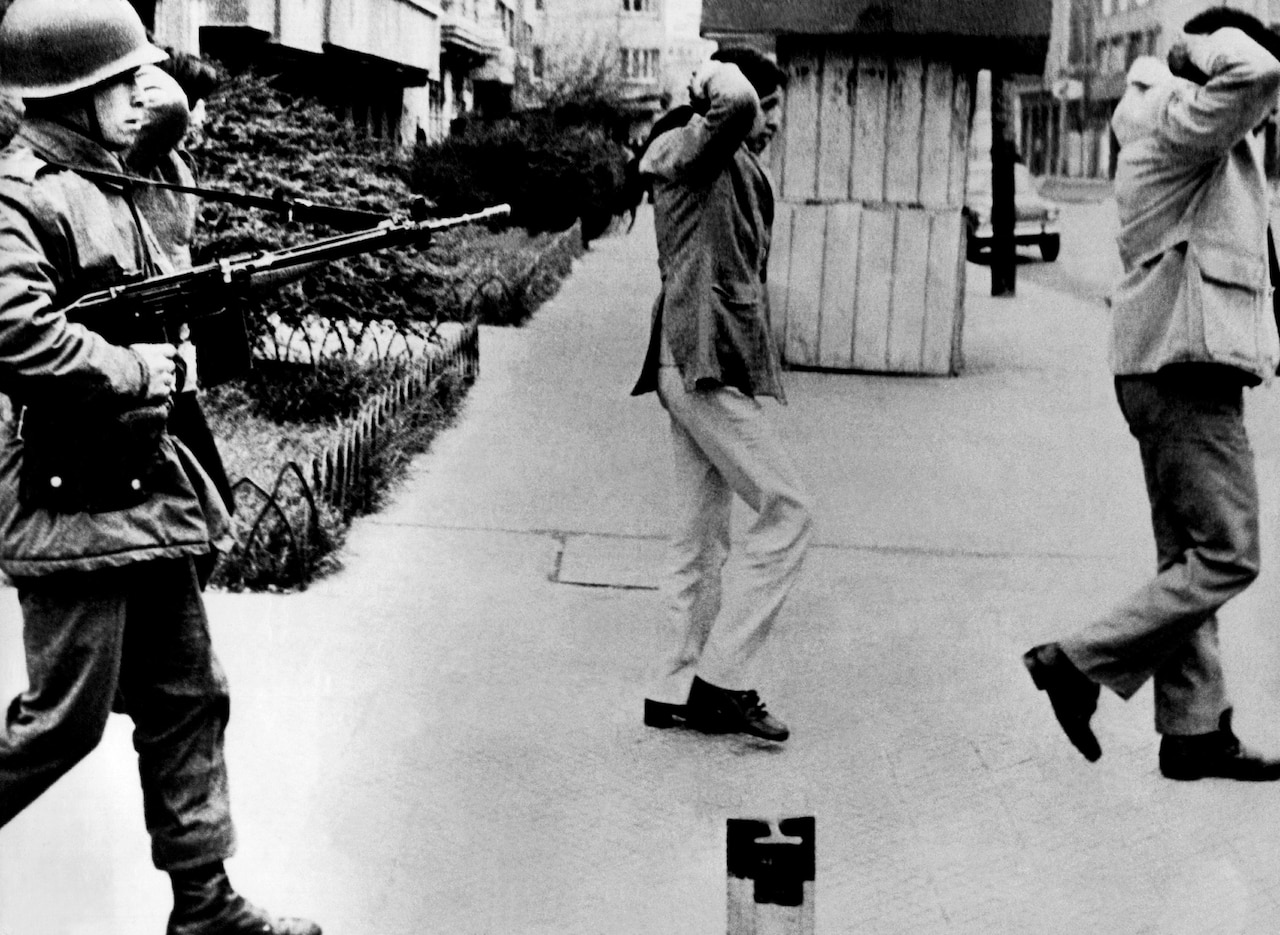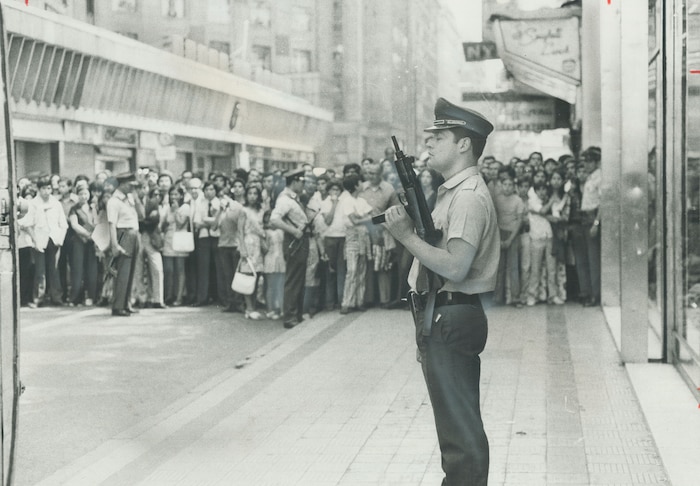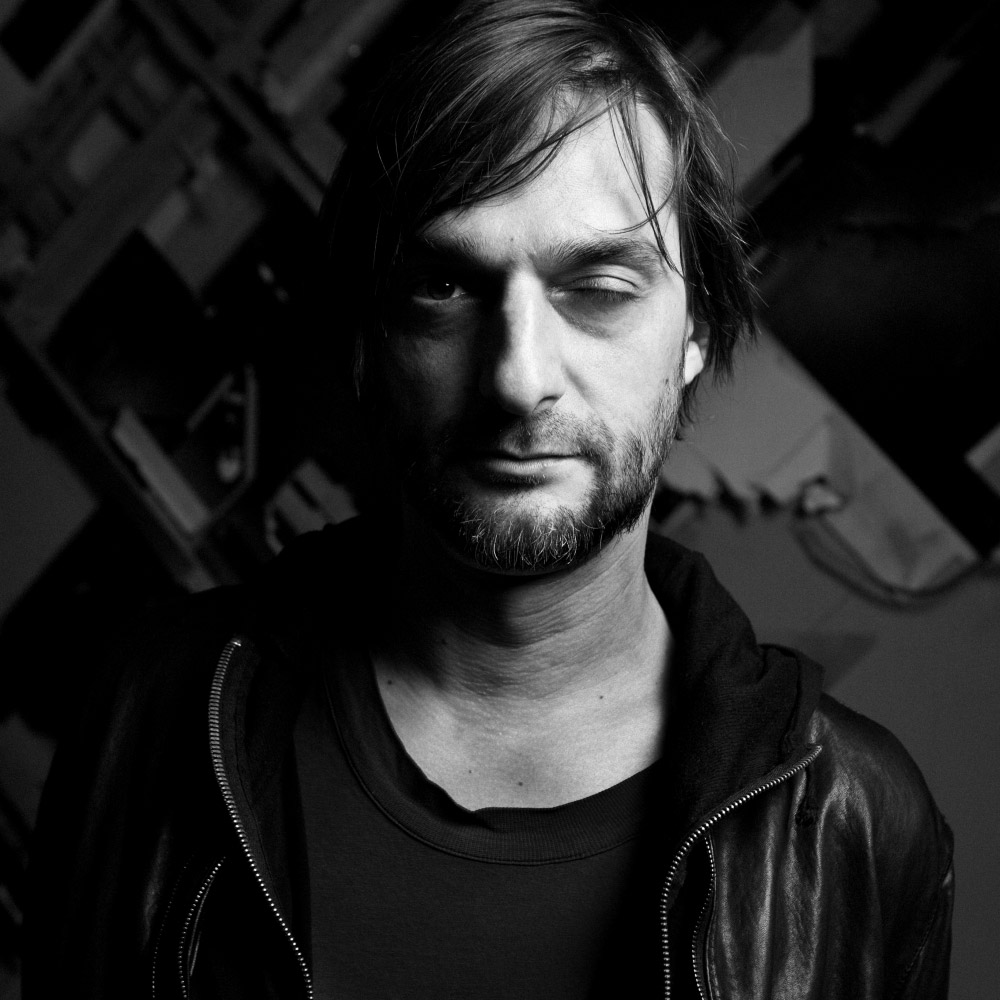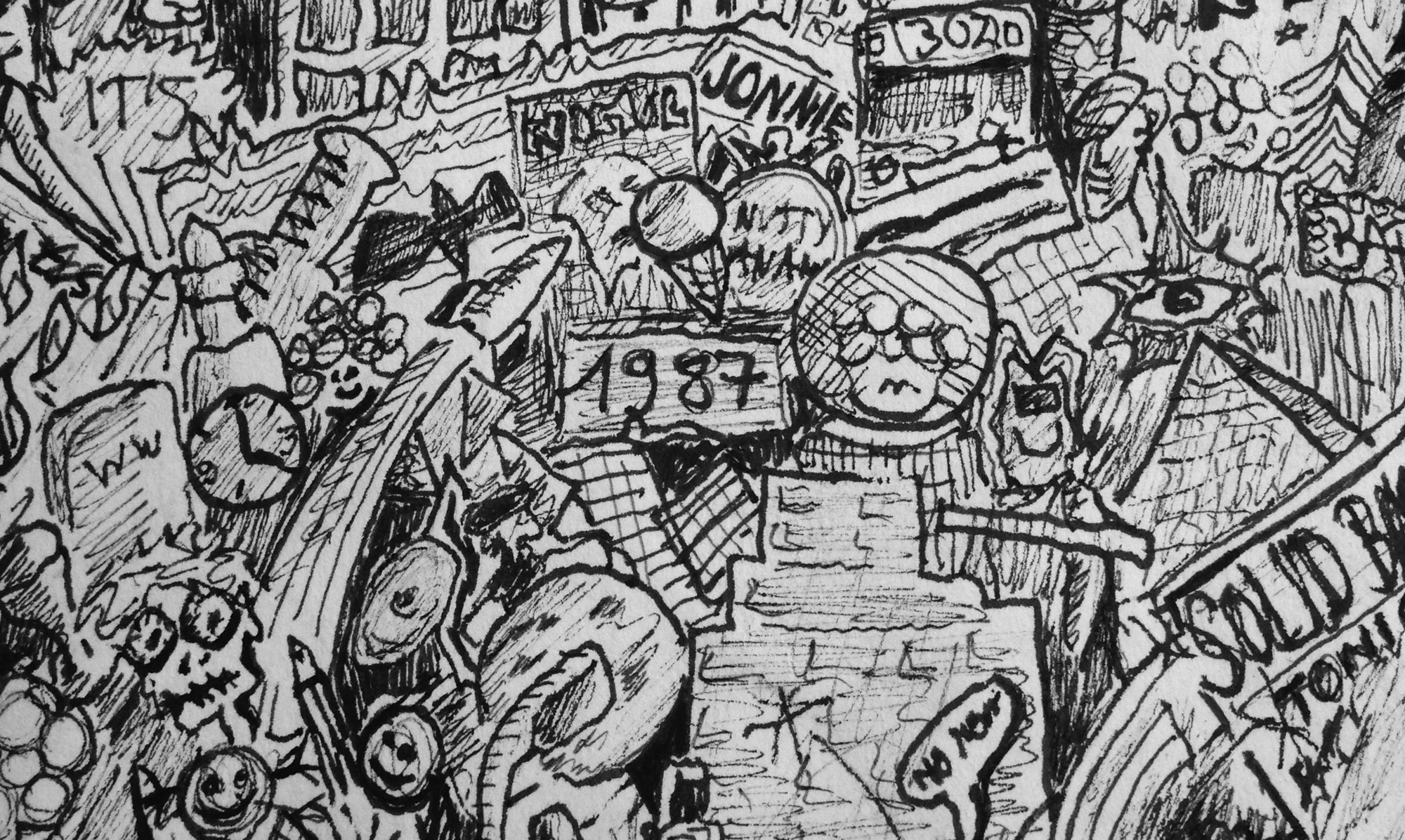
Music Under Curfew
Nearly two decades of dictatorship silenced musicians throughout Chile. But during the ’80s a new breed of musicians emerged, laying the foundations for a movement that continues to flourish today
Today it’s common to find magazine or web articles about the increasingly active Chilean independent music scene. For the first time we’re beginning to see several musicians born and raised in this country – situated at the end of the earth – having regional impact and influence. This might conjure the same emotional response for those outside Chile as for those who live there, mainly because they didn’t have to deal with a near-cultural extinction not long ago.
This occurred in 1973; September 11th, to be exact, when military troops, led by Augusto Pinochet, decided to forcibly end Socialist President Salvador Allende’s governmental rule. A bloody persecution of all those who had anything to do with the ousted government followed in the ensuing months. Naturally, several of them were artists.
Pinochet’s dictatorship almost finished off with one of the most active generations of musicians ever seen in Chile, largely grouped under the label “La Nueva Canción Chilena11The New Chilean Song.” Some of them were lucky enough to be on tour in Europe at the time, saving their own skin. Others, like the major local cultural icon Victor Jara, were jailed just days after the military coup and assassinated after being cruelly tortured.
There was a law that... said if you were with more than five friends, you would be immediately arrested.
That caused a wound to emerge, one difficult to heal. In the decade that followed, musicians made isolated efforts to continue making music in the other countries where they were exiled. The musicians who stayed in Chile either had to accept censorship or leave. Nothing that sounded remotely Andean was accepted by the military regime. It was replaced by music that was light, inoffensive and devoid of any social or political message.
Eduardo “Lalo” Meneses may very well hold the title of first rapper in Chile. Along with Panteras Negras (a group that started to climb to the top in the second half of the ’80s by merging socially themed rhymes and the sound of new jack swing) they portrayed the reality of people living in the most marginalized, peripheral neighborhoods of Santiago. Before that Lalo became involved in the genre through dance, and was one of the first to breakdance at a time when simply walking down the street with a group of people was enough reason for the police to be suspicious.
“After the curfews there was a law that had to do with the state of emergency the country was living through. It said if you were with more than five friends, you would be immediately arrested and supervised. In 1983 I was walking through downtown Santiago with a group of people. One of them was recording breakdance and funk cassettes for me at the time, but he had a Sol y Lluvia cassette in his backpack. So, when the police stopped and frisked us they started to beat on us right there and then. Listening to Sol y Lluvia, Violeta Parra, Illapu or Victor Jara was synonymous to getting beat up,” he recalls.
If things like that were considered offensive, naming your band Pinochet Boys was downright provocative. Miguel Conejeros, co-founder of the electro-punk quartet Pinochet Boys and an electronic music producer who goes under the alias F600, defines the band’s active years – between 1983 and 1986 – as some of the most dangerous ones during the dictatorship. “When we played, we could not put up promotional posters because it was simply an invitation for the police to arrive. One time we were in what is now Club La Feria and they cut the lights out, but we kept on playing because we had acoustical instruments like empty oil drums and chains. There was a moment when we had to leave the country because it was getting too difficult. There was always a car with tinted windows outside the house,” he says.
That same risk and sense of insecurity had its positive side. With nowhere to play, bands invented new spaces. And by not having much money to buy flashy instruments, creativity peaked. “Many times we would all plug into the same amplifier. It was all extremely precarious. We played music with whatever and however we could. It worked in our favor and allowed us to be more creative. We would invent percussion. Sometimes we would gather tin cans and strike them, and other times we would break glass windows. We did not limit ourselves for not having the means. It was quite the opposite,” explains Conejeros.
Paralleling this, the first samplers and synthesizers began to arrive to a couple of specialty shops in Chile that imported them. This allowed people who didn’t have much musical education, or who didn’t know how to play instruments well, to intuitively come closer and express their dissatisfaction with music.
One of these people was Carlos Cabezas, an electrical engineer who worked as an air traffic controller and founded the group Electrodomésticos [Appliances] with two friends. The seminal band improvised music with whatever they had on hand, in addition to sampling snippets from state television.
“There was a cultural black hole that produced a space where other capacities to see opportunities in desolate places were activated. So you dared to do things because the contrasts that make you impose self-censorship did not exist. We were a band with no drummer, and it was unheard of to present yourself like that. But in this artistic desert we could. Under normal circumstances we would not have looked like a band,” says Cabezas, who now is also a producer.
Sound wasn’t the only difference that these distinctive names incorporated. In the mid-’80s, the majority of music was openly right wing or left wing, like almost everything had been from 1973 on, or even before. That began to change with this new generation.
“My family was very involved in the social anti-dictatorship thing, but at one point my eardrums started to hurt from all the “Canto Nuevo” stuff. It was painful. That is how I hit the streets and without even understanding the lyrics I would understand through other things, like the musical arrangements or the dancing. After that, with a dictionary in hand, I began translating and everything began to make sense,” says Lalo Meneses.

“We were opposite to what existed at that time. For us the language of protest songs was tired and in general we were very distant from its ideological and political language that was, by then, so exacerbated. We acted under an instinct of survival, which is what produced these artistic manifestations. There was a political position in the sense that the social situation could not withstand common sense. By then, we were neither right wing nor left wing, nor anything like that. This was beyond arguments or justifications. That gut feeling that curfews could no longer exist hit very close to home. Our reaction in social terms was very different, it was completely visceral,” adds Cabezas.
Miguel Conejeros adds emphatically: “Here, everything was extremely boring for young people. Nothing was going on. There was all the whining of ‘Canto Nuevo’ and its baggage, which back then did not represent what we were. It was absolutely no part of us. We wanted something else, something more colorful. Today it is an everyday thing, but at that time it was strange to see someone with our type of haircut or earrings. Fascism was so ingrained in people that a couple of times we had stones thrown at us just for being like that.”
And so different artistic disciplines began to coalesce, all with a similar purpose. That’s how The Cleopatras were born. They were a multidisciplinary quartet that combined theater pieces with dance and music, and their members came from a more privileged side of town. One of them was married to Jorge Gonzalez, the Chilean music legend and main songwriter of the essential group Los Prisioneros [The Prisoners]. In her, he saw a way of combatting the prevailing machismo.
Cecilia Aguayo is a physician and a keyboardist. Today she lives in Santiago with her partner Uwe Schmidt, or Atom TM, and comprised part of Los Prisioneros. She compared her experience in the Cleopatras as starting to live life in color after it had been in black and white. Her music took a turn from Canto Nuevo musical icons like Isabel Parra and Santiago del Nuevo Extremo to modern bands like The Human League and New Order. Along with music, they chose eroticism to provoke.
It was a time when eroticism could be a political rebellion.
“Although we were very young, at that time provocation was a leitmotif for us, both for our identity as well as for the social situation we were living through. It was an experiment. That is the direction our impulses took. It was a time when eroticism could be a political rebellion. Our aesthetic proposal and our theme was a reaction to what we were experiencing. The ideological part was brewing inside of us. Everything was more intuitive,” she says, recalling that all parts of society didn’t agree with their formula. “I think that, yes, we were criticized, but I did not let it get to me. That appeared over time. Ours was a feminine feminism. We were devout saints neither to the most orthodox ones nor to lesbians. Women hated us for our eroticism.”
Fortunately for the young musicians at the time, Pinochet’s dictatorship was well known for its cultural ignorance, which only saw left wing music, folk music and Andean sounds as something dangerous. Many of these new creations (besides those already mentioned) included Aparato Raro, Fiskales Ad-Hok, Índice de Desempleo, Upa! and Emociones Clandestinas. They passed under the radar of the military by using tools considered as “weird”: synthesizers, samplers or electric guitars. And, by making no direct references in their lyrics, they were saved from censorship.
“One of the advantages we had was that nobody took us very seriously or thought what we were doing could have any social effect of protest. That helped us develop what we did from a more visceral political position, but with a clear stance on what the events were,” muses Cabezas.
We didn’t have any left wing political slogans, rather we preached we were free and wanted to have fun.
Conejeros adds: “They didn’t know how to deal with us. It was such a shock for them when they saw us. Once the police stopped us on our way to Vina del Mar for looking suspicious, for how we were dressed, and they released us right away because they didn’t know what to do with us. We didn’t have any left wing political slogans, rather we preached we were free and wanted to have fun. We were young and wanted to use our free space.”
That feeling was shared by part of the local youth, who had their own modern references to turn to when listening to music, equivalent to what was being played in the United States, Britain or even neighboring Argentina. These were musicians that began the Chilean musical revival and installed the foundation for the slow recovery of an identity. It’s one that today is no longer renewed every ten or 15 years, but every two or three.
If you look at Chile as a contemporary exporter of independent pop, psychedelic rock, electronic music or hip-hop, much is explained in the inventive and daring feats of those who gambled to demand the right to use their freedom and create with what they had on hand – a generation that dared to make music during the dictatorship.
Header image: Keystone-France / Getty Images Contributor

